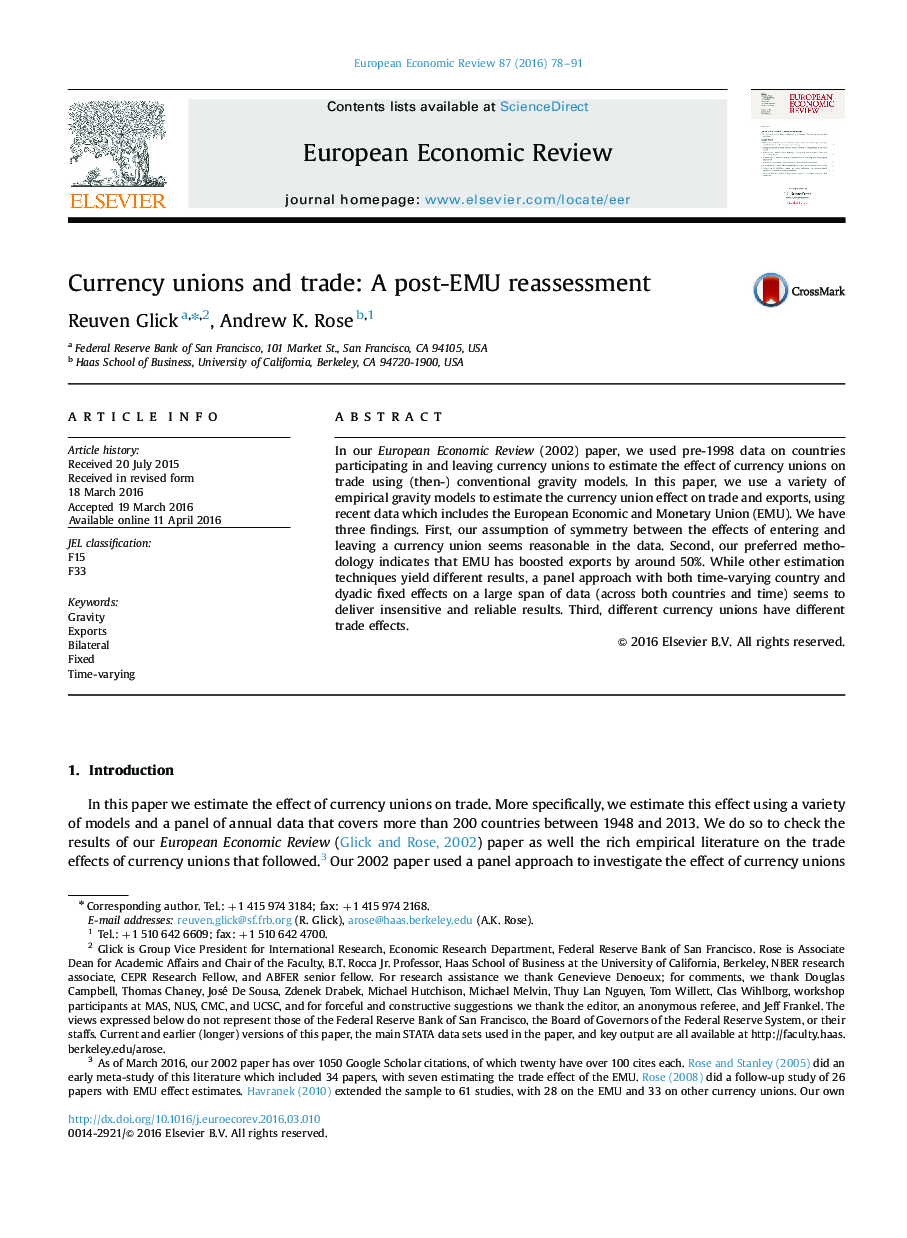| Article ID | Journal | Published Year | Pages | File Type |
|---|---|---|---|---|
| 5066562 | European Economic Review | 2016 | 14 Pages |
In our European Economic Review (2002) paper, we used pre-1998 data on countries participating in and leaving currency unions to estimate the effect of currency unions on trade using (then-) conventional gravity models. In this paper, we use a variety of empirical gravity models to estimate the currency union effect on trade and exports, using recent data which includes the European Economic and Monetary Union (EMU). We have three findings. First, our assumption of symmetry between the effects of entering and leaving a currency union seems reasonable in the data. Second, our preferred methodology indicates that EMU has boosted exports by around 50%. While other estimation techniques yield different results, a panel approach with both time-varying country and dyadic fixed effects on a large span of data (across both countries and time) seems to deliver insensitive and reliable results. Third, different currency unions have different trade effects.
